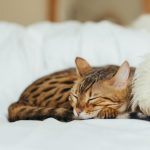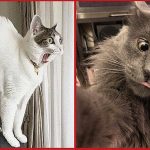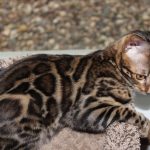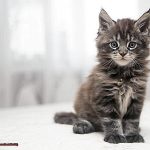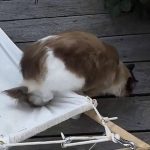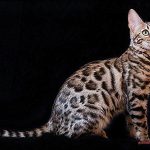Cats are intriguing creatures that never fail to surprise us with their unique personalities. Their quirky behavior and adorable antics can leave us both amused and perplexed, but one particular behavior that often catches our attention is when cats open and close their paws. You might have observed your feline friend stretching out their paws with their claws fully extended, only to curl them back up moments later. As amusing as it may look, have you ever wondered why they do it?
The truth is that cats open and close their paws for several reasons. They do so to mark their territory, as a form of exercise or to stretch their muscles. But wait, there’s more – this simple action can also be a sign that your cat is feeling comfortable and relaxed. It’s amazing how much information we can gather from such a small movement.
Whether you’re a seasoned cat owner or new to the game, understanding why cats open and close their paws can help you better understand your feline friend. In this blog post, we’ll delve deeper into this behavior and explore the different reasons why cats do it. So buckle up, grab some treats for your furry companion, and let’s unravel the mystery behind our adorable pawed pals.
What is Paw Opening and Closing?
It’s quite common among cats and can have many meanings. This behavior is known as paw opening and closing, and it occurs when a cat repeatedly flexes and extends their paws – almost as if they’re kneading dough.
Kneading is a behavior that kittens exhibit when nursing from their mother, as it helps to stimulate milk production. As cats grow up, they may continue to knead as a way to show contentment and relaxation. So when your cat is opening and closing their paws, it can be a sign that they’re feeling relaxed and content.
But paw opening and closing isn’t just about relaxing – it can also be a way for cats to mark their territory. Cats have scent glands located on the bottom of their paws, and by kneading on a particular surface, they’re leaving behind their scent. This behavior can be seen as a way of claiming an area or object as their own. Some cats may even knead on their owners as a way of marking them as their own.
Beyond marking territory, paw opening and closing can also be a sign of affection from your cat. When cats knead on their owner’s lap or on a blanket, it can be seen as a way of showing love and bonding with their human companion. So the next time your cat is kneading away, know that they’re expressing themselves in their own special way, and it’s a sign that they trust and love you.
Theory 1: Stretching and Flexing Muscles

One theory that stands out is that it’s a way for them to stretch and flex their muscles, which is essential for maintaining their physical health.
Cats are known for their agility and flexibility, and stretching plays a crucial role in keeping them in tip-top shape. Stretching helps to elongate their muscles, increase blood flow throughout their body and promote relaxation. When cats extend and retract their claws, they are potentially stretching the tendons in their paws, which can help prevent injuries, strengthen muscles, and improve range of motion.
In addition to serving as a preventive measure against injury, stretching may also serve as a warm-up routine before engaging in physical activity. Similar to humans, cats may use stretching as a way to prepare their bodies for movement.
It’s worth noting that not all cats will exhibit this behavior in the same way or for the same reasons. Some cats may do it more frequently than others, while some may not do it at all. It’s also possible that there could be other reasons behind this behavior that are yet to be fully understood.
Theory 2: Emotional States
It’s amazing how these furry creatures use their paws to convey their feelings.
When a cat is feeling content and relaxed, it may slowly open and close its paws as a sign of happiness. On the other hand, when a cat feels anxious or stressed, it may rapidly open and close its paws as a form of self-soothing behavior. So, the next time you see your cat doing some paw aerobics, pay attention to how fast or slow they are moving their paws to gauge their emotional state. It’s like they’re sending us a secret message.
But wait, there’s more. Cats also use their paws to communicate with humans. When your cat gently places its paw on your hand or face, it may be a sign of affection or a request for attention. Similarly, when your cat kneads its paws on your lap or on soft surfaces, it may be a sign of comfort and relaxation – like they’re giving you a massage. So, the next time your furry friend kneads on you, know that they’re showing you how much they trust and feel safe around you.
Interestingly, some cats also use their paws to mark their territory. They scratch objects in their environment as a way to leave visual and olfactory cues for other cats. By doing so, they establish ownership over their surroundings and communicate their presence to other felines. It’s like they’re saying “this is mine.”
Theory 3: Hunting Instincts
While it may seem like a harmless and cute behavior, according to research, it could actually be a manifestation of their hunting instincts.
Cats are natural predators, and even domesticated cats still possess these primal instincts. When a cat is stalking prey, it will often use its paws to bat at or swipe at its target. This action helps the cat to practice for the actual act of capturing prey, as well as to hone its reflexes and motor skills. The opening and closing of their paws is a natural instinct ingrained in their DNA.
During playtime, cats may also use their paws to swat at toys or chase strings, mimicking the actions of hunting and allowing them to practice their skills. In fact, this behavior can be seen as a way for cats to sharpen their senses. However, experts suggest that opening and closing their paws may also be an indicator of a cat’s level of excitement or arousal. When a cat becomes excited or aroused, it may begin to move its paws in this motion as a way to release pent-up energy.
Understanding this behavior can provide insight into your pet’s natural instincts and allow you to provide opportunities for them to engage in play and practice their hunting skills. Additionally, engaging in interactive play with your cat can help them release energy in a safe and controlled environment, satisfying their natural predatory nature.
Other Reasons for Paw Opening and Closing
5 Other Reasons Why Cats Open and Close Their Paws
Cats are known for their mysterious behavior, and one of the most intriguing ones is opening and closing their paws. While we already know some reasons, such as stretching or kneading, there are more fascinating theories to this behavior. In this blog post, we’ll explore five other reasons why cats open and close their paws.
Playing or Hunting:
Have you ever noticed your cat opening and closing their paws while playing with a toy or stalking prey? This behavior mimics their natural instincts to grab and hold onto their prey. It’s a reminder that our cute and cuddly pets are also fierce hunters at heart.
Getting Comfortable:
Cats love their sleep, and they take it seriously. In fact, they may adjust their paws while settling down for a nap, much like how humans adjust their pillows and blankets. It’s a moment of pure coziness that shows how much they cherish their rest.
Coping with Anxiety:
Just like humans, cats can experience anxiety and stress. When they feel threatened or nervous, they may start moving their paws in a repetitive motion as a coping mechanism. If you notice your cat doing this frequently, it may be helpful to provide them with a calm and safe environment.
Communication:
Cats have a unique way of communicating with us humans, and paw opening and closing is just one of them. They may use it as a way to ask for attention or food, or to signal that they’re feeling happy or content. It’s important to pay attention to your cat’s body language next time they do this.
Boredom or Restlessness:
Indoor cats that don’t have access to outdoor activities or stimulation may open and close their paws out of boredom or restlessness. This behavior is a sign that they need more playtime and interaction with their owners. Providing them with toys or interactive playtime can help alleviate this behavior.
ME4pJcJ-7s0″ >
Also Read: Why Do Cats Curl Their Paws?
Conclusion
In conclusion, cats are truly fascinating creatures that never cease to amaze us with their quirky behaviors. The opening and closing of their paws is just one example of how they communicate with us and express themselves.
Whether it’s a sign of affection or an instinctual behavior related to hunting, paw opening and closing can provide valuable insights into our feline friends’ emotional state. By paying attention to their body language, we can better understand their needs and provide them with the care they deserve.
But there’s more to this behavior than meets the eye. Cats may also open and close their paws when playing or getting comfortable, coping with anxiety, communicating with other cats, or simply out of boredom. Recognizing these various motivations behind paw flexing can help us create a stimulating environment for our pets and ensure their well-being.
At the end of the day, cats are unique animals that bring joy and companionship into our lives.
